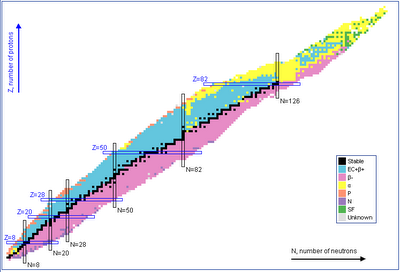Thoughts on the mining supertax
Update:
I originally wrote this blog rough draft 9 months ago. It got shelved because the prime minister to which it refers got sacked, and since then the new PM canceled the policty, had an election, came up with an amended policy, and then as far as I know shelved it. So the personalities involved have changed, but the overall situation has not.
The government unveiled its new overhaul of the Tax system, which include a resource profits tax of 40%. This has obvious implications for geology, since that is the science used to characterize and find all of these resources that provide the profits.
A few caveats:
Firstly, I despise the Prime Minister. I think he’s a smug, micromanaging, precious, condescending, myopic ratbag. I am similarly unimpressed with just about everything his government has done, with the exception of their financial crisis handling, which was OK.
Secondly, I’m gonna ignore the federalism issues here. Currently, mining royalties are paid to the States, as they own onshore resources and only offshore resources are federal. Obviously this federal resource tax would change all that, which is why the phrase “resources owned by all Australians” is repeated a zillion times.
The problem with resource booms in Australia is this: When the resource sector booms, Australia’s trade balance improves, and the Australian dollar gets stronger. This makes non-resource exports less competitive, and thus hurts the non resource-related part of the economy.
Mineral resources are non-renewable. So ideally, the wealth created by mining them should be used to strengthen and diversify the economy. In a boom, the opposite happens, because of currency strengthening and inflation related to industry demand.
So, some sort of boom-retarding economic adjustment does make sense. However, it needs to be done well. There is no shortage of current or historical countries which have squandered their mineral wealth and ended up dirt poor. And, unsurprisingly, it is not clear how this new tax will work.
The Government is notorious for not explaining how its policies are supposed to work. Most announcements are a curious mix of inside baseball terms and pandering platitudes, and all the tax reform announcements which I could find fit this pattern. However, a lot of the funds are earmarked for ‘infrastructure’. This could be useful, or it could be code for Pork. We really have no idea. However, the Government’s inability to communicate how programs work seems to be related to its tendency to pass reforms that don’t actually work, or that get rorted and ripped off. So I see no evidence that this is not such a debacle.
The thing is, it is really easy to actually summarize the problems of a 2 speed economy (export minerals vs. everything else) quite easily. There is no need to resort to condescending half-truths. Instead of repeating dubious talking points over and over robotically, they could actually tie the various current problems together into a compelling narrative. For example:
-Skilled export industries (be it IT, manufacturing, or education) are suffering because the dollar is being inflated by the export boom.
-Home loan rates are going up because higher interest rates are the only tool the bank has to cool off the overheating resource sector.
-Retailers are losing out to overseas online merchants because of the strong dollar
-International tourism (and education) is suffering for the same reason, coupled with the weak buying power of US and European currency.
These are all reported in the media as unrelated problems, and there has been no attempt by anyone to link them to overall macroeconomic management. No wonder they aren’t making any headway.



